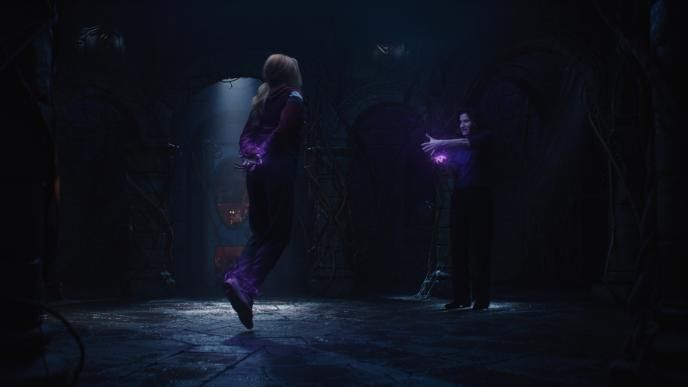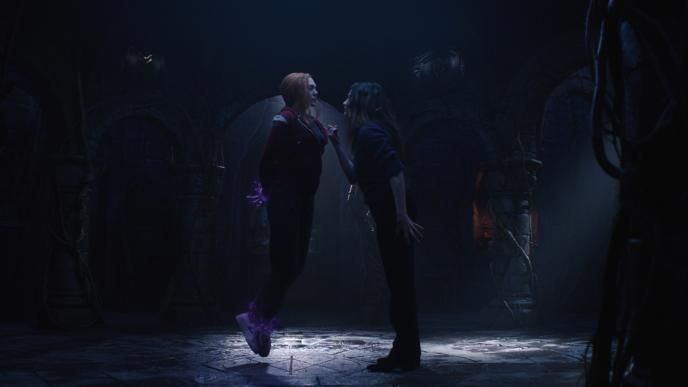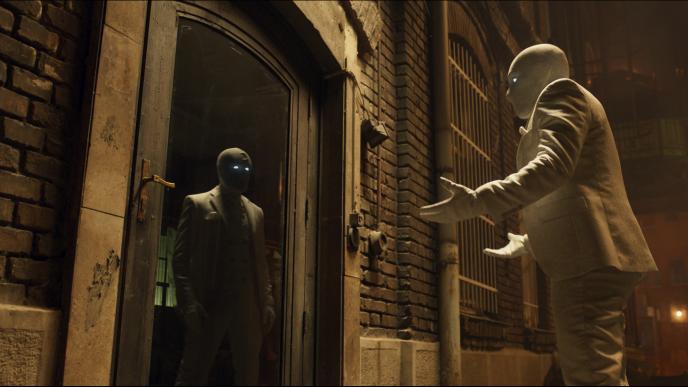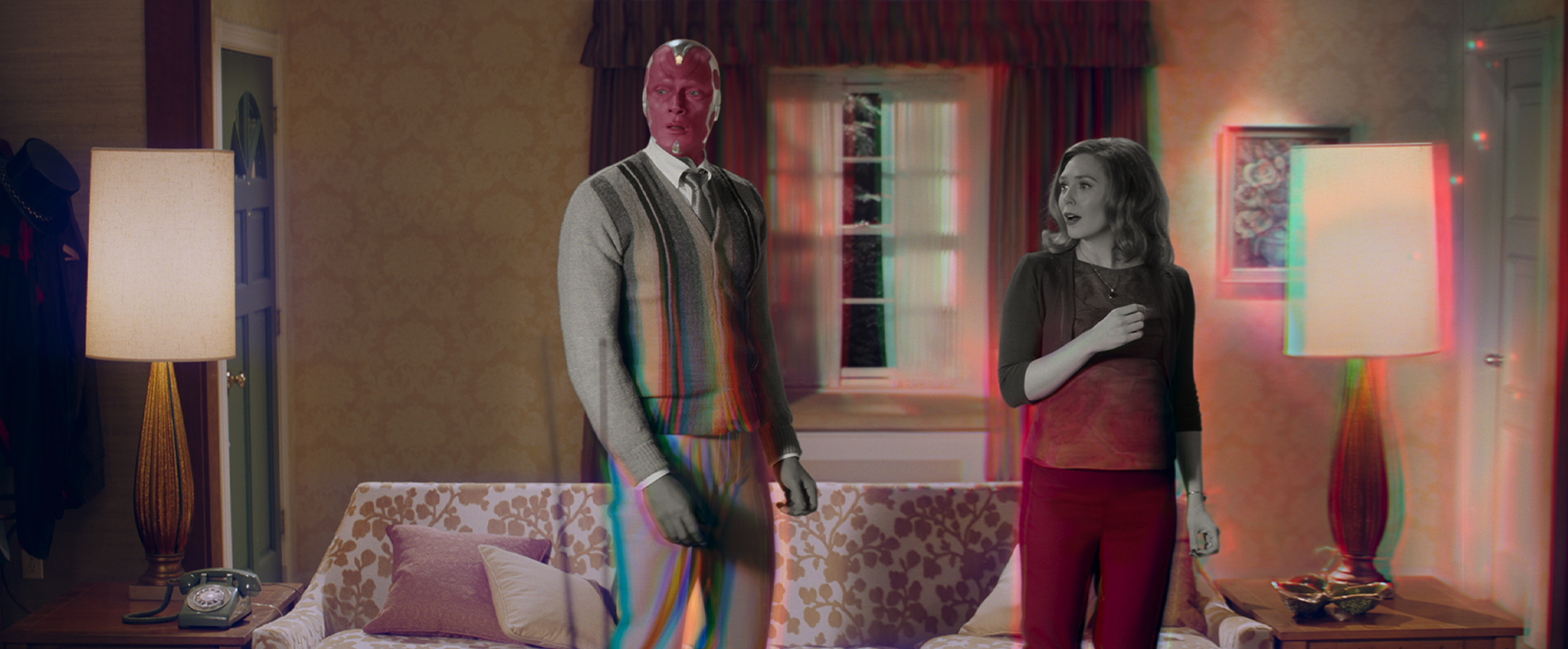
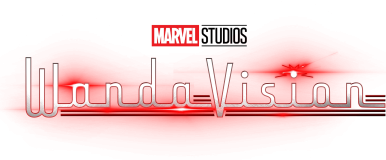
WandaVision
Framestore delivered VFX magic across 99 shots for Marvel Studios’ WandaVision, now streaming on Disney+. The show is a blend of classic television and the Marvel Cinematic Universe in which Wanda Maximoff (Elizabeth Olsen) and Vision (Paul Bettany) — two super-powered beings living idealized suburban lives — begin to suspect that everything is not as it seems. The series is directed by Matt Shakman with Jac Schaeffer as head writer.
Our New York studio was tasked with bringing to life high-end, photorealistic creatures along with scene transformations and magic effects throughout various episodes within the series.
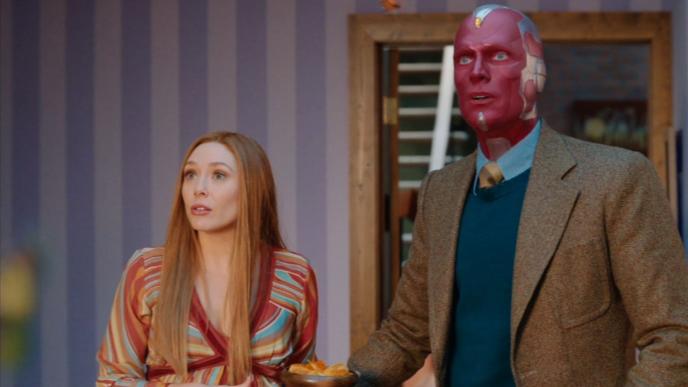
Beginning with Episode 2, Framestore created a realistic and transformative color blossom effect to bridge the black and white environment with the new world in color, once Wanda works her magic. This transformation went through a number of incarnations, ultimately landing on a simple effect that was reminiscent of the 1950s era depicted in the story. Achieving the right balance of color distortion was key to realizing the texture of the period and the signature colors for the rest of the show.
Framestore VFX Supervisor Nick Tanner undertook the task by thoroughly researching the way that real film would have been traditionally pressed together and developed during that same era. His knowledge of historic film techniques as well as modern day compositing methods allowed him to add an extra dimension when bringing the sequence to life.
“I'm a big fan of optical effects and techniques, so we decided to emulate an optical printer treating each color layer of 'film' as if it had been shot through different distortion materials and then recombined,” said Tanner. “Our distortion was driven through 2D and 3D generated textures and synthesized with additional chroma aberration effects. We added a particle pass generated in 3D, but retimed the elements as if they had been animated 'on twos,' which was a common approach in traditional hand animation and gives the particles a stuttery, irregular appearance.”
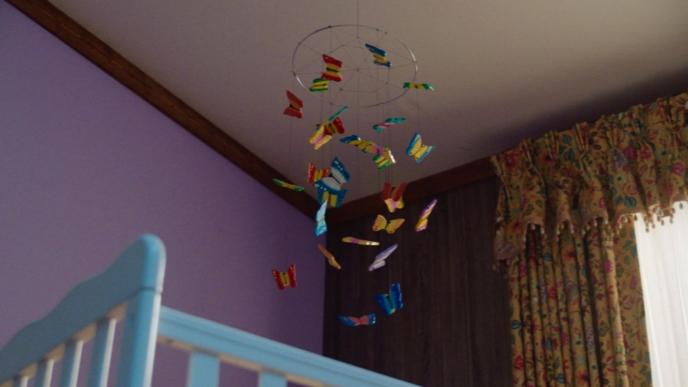
As seen in Episode 3, Framestore transformed a butterfly mobile into a kaleidoscope that fills the screen, thanks to the magic of CG. By intentionally paring back some of the detail that today’s audiences have come to expect, they created a balance between a period-authentic appearance while still maintaining some of the photorealism.
Framestore also built the CG stork that appears in various episodes, enabling the show to bring the protected species to life with an unmatched level of textural detail. Every vein of each feather was meticulously considered, so that when lighting fell off each layer it allowed for a more interesting and textural dynamic, creating volume rather than simply showcasing a surface of feathers. A chorus of cicadas and a small bird were developed for later episodes, and as with the other creatures, Maya was used across the modeling and rigging process, Houdini for rendering and shading, and Nuke for all compositing, in order to streamline the process across each character.
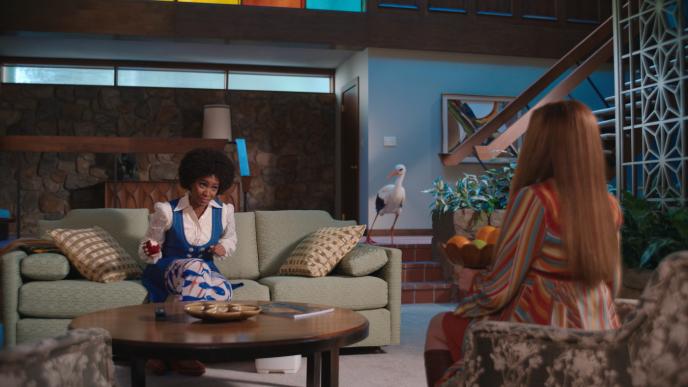

The team also explored and developed the appearance of Agatha’s magic, based on a brief for the effects to encapsulate that same air of retroness and period authenticity, while also respecting the canon of Marvel characters that had been showcased before her. With considerable career experience developing visual effects across feature and episodic projects, Framestore’s Creative Director and VFX Supervisor John Kilshaw oversaw the creative development of each sequence, including how the villain’s magic would manifest in the show.
“The most exciting part of our work on WandaVision for me personally was the task of developing a look and feel for Agatha’s magic that could then be implemented throughout various sequences by other VFX partners,” said Kilshaw. “We knew we needed to conjure up something sinister that pulled in the dark energy of the world around her, while also connecting it to the natural world in a way that nods to the manifestation of the Scarlet Witch’s magic.”
